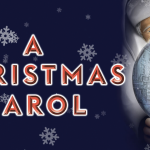Shaking Up Shakespeare
The MSO brings in actors to tackle Prokofiev’s Romeo and Juliet

Guest conductor Rossen Milanov will join the Milwaukee Symphony Orchestra in a concert that bows twice to the works of William Shakespeare.
William Shakespeare will take center stage this week at the Marcus Center, but this time, his work will go beyond the realm of theater. And beyond the realm of music.
The Milwaukee Symphony Orchestra will team up with Shakespearian actors, directed by Mark Clements of the Milwaukee Repertory Theater, to deliver scenes from the playwright’s Romeo and Juliet, which will be accompanied by selections from Sergei Prokofiev’s ballet music for the classic tale.
“Every emotion in Shakespeare is a little bit magnified,” says guest conductor Rossen Milanov, who will oversee the unusual collaboration. “I think that suits very well for the music.”
The MSO will also perform Felix Mendelssohn’s overture to Shakespeare’s A Midsummer Night’s Dream, which includes the beloved “Wedding March.” And MSO concertmaster Frank Almond will be the featured soloist in two works for violin and orchestra: Ernest Chausson’s Poème for Violin and Orchestra, Op. 25 and Bela Bartók’s Rhapsody for Violin and Orchestra.
So it’s a big and varied program, though Romeo and Juliet is the centerpiece. The conductor’s biggest challenge was to find a way that allows a work written for ballet to mesh well with a purely theater production. Milanov says this was made easier by the numbered ballet movements, which gave musicians and actors a clear outline of which scene should be accompanied with which movement.
It’s a unique setting for actors Max Mainwood (Romeo), Erin Stapelton (Juliet), Michael Cotey (Tybalt) and Nicholas Harazin (Mercutio), and an opportunity for audience to see two very different art forms interact on a single stage.
“It’s almost going to be different languages meeting with one another on stage,” Milanov says.
In a way, though, this production continues a historical phenomenon surrounding the world’s most celebrated playwright. Shakespeare’s works inspired countless other classical music works, from Verdi’s opera Macbeth to Tchaikovsky’s own interpretation of Romeo and Juliet. Milanov suggests this was possible due to Shakespeare’s masterful combination of tragic and comedic elements.

In this famous 1884 oil on canvas, Frank Dicksee portrays the iconic balcony scene of Shakespeare’s Romeo and Juliet.
“There is no play by Shakespeare that is either only tragedy or only comedy,” Milanov says. “Composers clearly appreciate the opportunity to have lightness in the atmosphere of a work that could be really dark.”
The Prokofiev piece originally premiered in 1935, more than 300 years after Shakespeare’s death in 1616, eventually becoming one of the composer’s best-known productions. The composer — also known for such popular works as “The Love for Three Oranges,” “Lieutenant Kijé” and “Peter and the Wolf”— took advantage of the intense rivalry between the Capulets and the Montagues to produce one of the best-known movements from the ballet: “Dance of the Knights.”
The movement opens with a dark, pulsating rhythm from the brass section, creating a foreboding mood representative of the emotional backdrop for the play. Prokofiev famously breaks the rhythm with a soft oboe solo to introduce Juliet into the scene, and then revives the rhythm with the entrance of Romeo, symbolized by a tenor saxophone.
The intensity of the piece and the tenor sax, which was rarely ever used in during in classical compositions, left a lasting impression on the music community. Strangely enough, it also became a favorite walk-in piece for heavy rock bands like Muse, Iron Maiden and Deep Purple.
“Prokofiev had an incredible gift for writing melodies,” Milanov explains. “His music has a sense of lightness that one does not necessarily expect from the mid-1930s. It uses a lot of contrasts, but at the same time, it has a fantastic sense of lyricism.”
Overall, the concert promises to offer something different for nearly any kind of audience member. “We’re just trying to present an opportunity for people to have a different entry point into classical music,” Milanov says. “It’s not necessarily your standard classical concert type of night.”
8 p.m., April 18-19. Tickets range from $22-$102, available online or by calling (414) 291-7605.
Other events coming up:
All Rachmaninoff with the MSO
Next week’s all-Rachmaninoff concert by the Milwaukee Symphony Orchestra is expected to draw big crowds, given that the MSO’s annual concert dedicated entirely to Sergei Rachmaninoff has always been a sell-out.
The performance, led by MSO music director Edo de Waart, will feature Rachmaninoff’s “Prince Rostislav,” Piano Concert No. 4 in G minor and Symphony No. 3 in A minor. Nationally acclaimed pianist Joyce Yang will use the concert to complete her Rachmaninoff cycle.
11:15 a.m. April 25, 8 p.m. April 26 and 2:30 p.m. April 27. Tickets range from $22-$82, available online or by calling (414) 291-7605.
Milwaukee Chamber Orchestra and Danceworks Collaboration
The Milwaukee Chamber Orchestra, Milwaukee Opera Theatre and the Danceworks Performance Company will come together for the third consecutive season to tackle the avant-garde poetry of Edith Sitwell, accompanied by music by William Walton.
In 1922, Walton created the musical accompaniment to Sitwell’s nonsensical poems, titled “Façade,” the work was later staged as a ballet by Gunter Hess in 1929.
7:30 p.m., April 25-27. Tickets are available online.
I’m Not A Pilot performs with the MYSO
It’s a rare event when contemporary rock backs mix with the talent of young classical musicians. For the Milwaukee-based band I’m Not A Pilot, though, such a mash-up is expected.
The classical crossover band, which features MSO cellist Peter Thomas, will join the Milwaukee Youth Symphony Orchestra at the South Milwaukee Performing Arts Center for a one-in-a-kind concert.
7:30 p.m., April 25. Tickets range from $12-$29 and are available online.


















